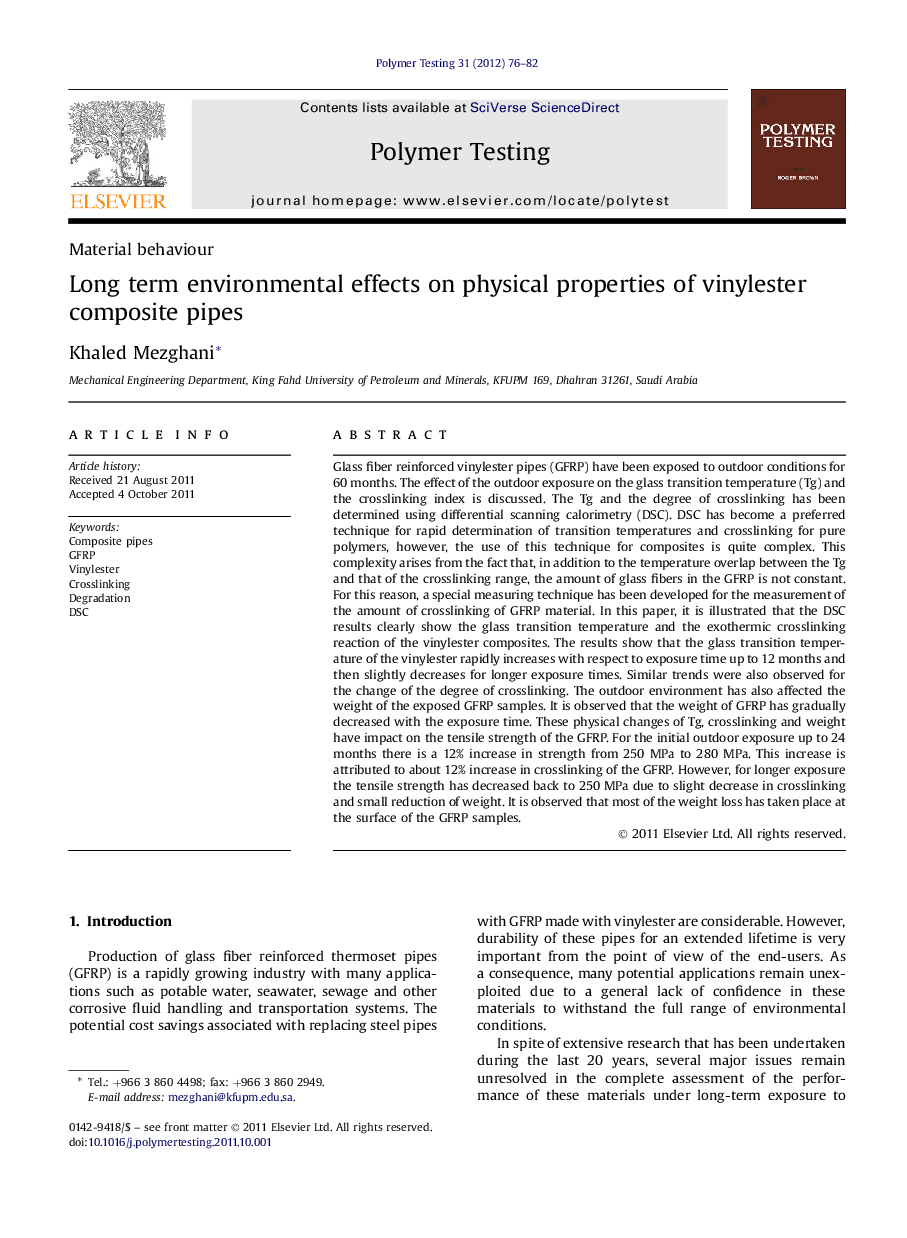| Article ID | Journal | Published Year | Pages | File Type |
|---|---|---|---|---|
| 5206829 | Polymer Testing | 2012 | 7 Pages |
Abstract
Glass fiber reinforced vinylester pipes (GFRP) have been exposed to outdoor conditions for 60 months. The effect of the outdoor exposure on the glass transition temperature (Tg) and the crosslinking index is discussed. The Tg and the degree of crosslinking has been determined using differential scanning calorimetry (DSC). DSC has become a preferred technique for rapid determination of transition temperatures and crosslinking for pure polymers, however, the use of this technique for composites is quite complex. This complexity arises from the fact that, in addition to the temperature overlap between the Tg and that of the crosslinking range, the amount of glass fibers in the GFRP is not constant. For this reason, a special measuring technique has been developed for the measurement of the amount of crosslinking of GFRP material. In this paper, it is illustrated that the DSC results clearly show the glass transition temperature and the exothermic crosslinking reaction of the vinylester composites. The results show that the glass transition temperature of the vinylester rapidly increases with respect to exposure time up to 12 months and then slightly decreases for longer exposure times. Similar trends were also observed for the change of the degree of crosslinking. The outdoor environment has also affected the weight of the exposed GFRP samples. It is observed that the weight of GFRP has gradually decreased with the exposure time. These physical changes of Tg, crosslinking and weight have impact on the tensile strength of the GFRP. For the initial outdoor exposure up to 24 months there is a 12% increase in strength from 250Â MPa to 280Â MPa. This increase is attributed to about 12% increase in crosslinking of the GFRP. However, for longer exposure the tensile strength has decreased back to 250Â MPa due to slight decrease in crosslinking and small reduction of weight. It is observed that most of the weight loss has taken place at the surface of the GFRP samples.
Related Topics
Physical Sciences and Engineering
Chemistry
Organic Chemistry
Authors
Khaled Mezghani,
